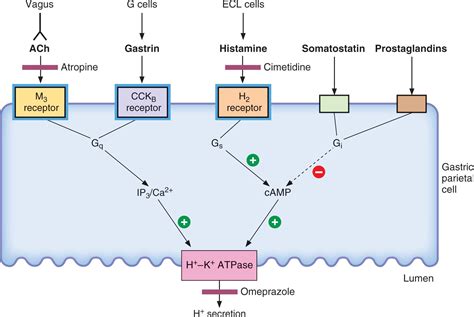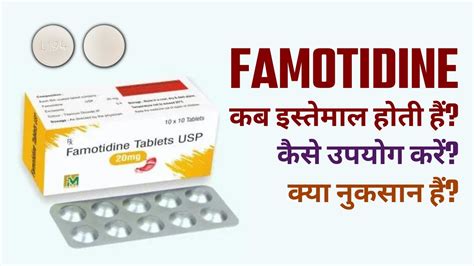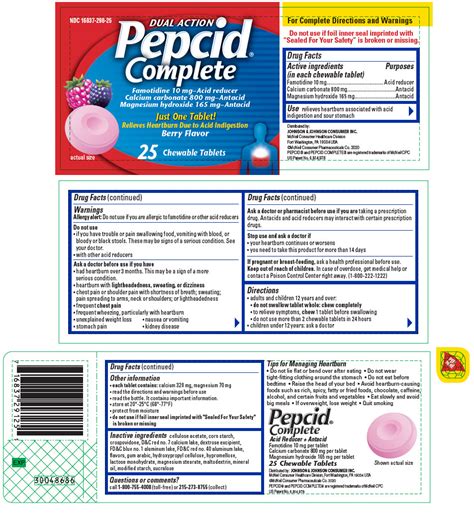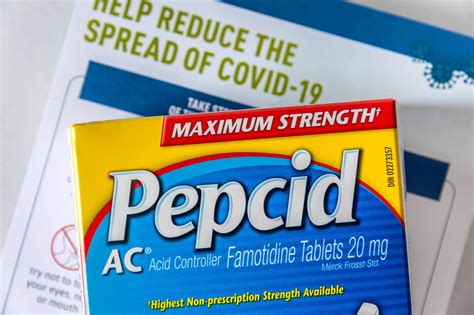Intro
Discover the uses and benefits of Famotidine, a heartburn medication, for acid reflux, peptic ulcers, and gastroesophageal reflux disease (GERD) treatment, offering relief and prevention.
The world of medication is vast and complex, with numerous drugs available to treat a wide range of conditions. One such medication that has been widely used for decades is famotidine, a histamine-2 (H2) blocker that reduces stomach acid production. Famotidine uses and benefits are numerous, and it's essential to understand how this medication works, its applications, and the advantages it offers. Whether you're a healthcare professional or someone looking for information on managing stomach issues, this article aims to provide a comprehensive overview of famotidine, its uses, benefits, and more.
Famotidine has been a cornerstone in the treatment of various gastrointestinal conditions, including gastroesophageal reflux disease (GERD), peptic ulcers, and Zollinger-Ellison syndrome. Its effectiveness in reducing stomach acid has made it a preferred choice among both doctors and patients. The medication works by blocking histamine receptors in the stomach lining, thereby decreasing acid secretion. This mechanism of action not only helps in alleviating symptoms but also in preventing complications associated with excessive stomach acid.
The importance of understanding famotidine uses and benefits cannot be overstated, especially in today's world where gastrointestinal issues are on the rise. Factors such as diet, lifestyle, and stress contribute significantly to the prevalence of these conditions. By grasping the role of famotidine in managing these issues, individuals can better navigate their treatment options and make informed decisions about their health. Moreover, as research continues to uncover the full potential of famotidine, its applications may expand beyond current uses, offering new hope for those suffering from related conditions.
Famotidine Mechanism of Action

Famotidine's mechanism of action is centered around its ability to inhibit the action of histamine at the H2 receptors of the parietal cells in the stomach. Histamine is a chemical that stimulates the parietal cells to produce gastric acid. By blocking these receptors, famotidine significantly reduces gastric acid secretion. This reduction in acid production is beneficial in treating conditions where excessive acid causes symptoms or damage to the esophagus, stomach, or duodenum. The onset of action of famotidine is relatively quick, with effects seen within an hour of oral administration, making it an effective option for both short-term and long-term management of acid-related disorders.
Pharmacokinetics of Famotidine
The pharmacokinetics of famotidine involves its absorption, distribution, metabolism, and excretion. After oral administration, famotidine is well absorbed from the gastrointestinal tract, with peak plasma concentrations achieved within 1-3 hours. It is distributed throughout the body, with a volume of distribution that indicates it is confined mainly to the extracellular fluid. Famotidine is primarily excreted unchanged in the urine, which suggests that renal function plays a crucial role in its elimination. Understanding the pharmacokinetics of famotidine is essential for optimizing its dosing regimen, especially in patients with renal impairment, where dose adjustments may be necessary to avoid accumulation and potential side effects.Famotidine Uses

Famotidine uses are diverse, reflecting its efficacy in managing a variety of gastrointestinal conditions. Some of the primary uses include:
- Treatment of Gastroesophageal Reflux Disease (GERD): GERD is characterized by the backflow of stomach acid into the esophagus, leading to symptoms like heartburn and acid reflux. Famotidine helps in reducing the frequency and severity of these symptoms by decreasing stomach acid production.
- Healing and Prevention of Peptic Ulcers: Peptic ulcers are sores that develop on the inside lining of the stomach and the upper portion of the small intestine. The most common symptoms are burning stomach pain and complications can include bleeding, perforation, and narrowing of the stomach or duodenum. Famotidine promotes healing and prevents recurrence by reducing acid secretion.
- Treatment of Zollinger-Ellison Syndrome: This is a rare disorder characterized by excessive gastric acid secretion due to high levels of gastrin, a hormone that stimulates acid production. Famotidine is effective in managing the excessive acid production associated with this condition.
Benefits of Famotidine
The benefits of famotidine are multifaceted, contributing to its popularity among patients and healthcare providers alike. Some key benefits include: - **Rapid Symptom Relief:** Famotidine provides quick relief from symptoms associated with acid-related disorders, improving the quality of life for those affected. - **Effective in Treating a Range of Conditions:** Its efficacy in managing GERD, peptic ulcers, and Zollinger-Ellison syndrome makes it a versatile medication in the gastrointestinal drug arsenal. - **Generally Well-Tolerated:** Famotidine has a favorable side effect profile, with most patients experiencing minimal or no side effects during treatment.Famotidine Side Effects and Interactions

While famotidine is generally well-tolerated, like all medications, it can cause side effects and interact with other drugs. Common side effects are typically mild and may include headache, dizziness, constipation, and diarrhea. However, in rare cases, more serious side effects can occur, such as allergic reactions or severe skin conditions. It's also important to be aware of potential drug interactions, as famotidine can affect the absorption or action of other medications. For example, it may decrease the absorption of certain drugs like ketoconazole, an antifungal medication. Informing your healthcare provider about all medications you're taking is crucial to minimize risks and ensure safe treatment.
Precautions and Warnings
Precautions and warnings associated with famotidine use are essential to consider, especially for certain patient populations. For instance, patients with renal impairment may require dose adjustments to prevent drug accumulation. Additionally, famotidine should be used with caution in pregnant and breastfeeding women, as its safety in these populations is not well established. It's also important for patients to follow the prescribed dosage and duration of treatment to avoid unnecessary exposure and potential side effects.Famotidine Dosage and Administration

The dosage and administration of famotidine can vary depending on the condition being treated and the patient's response. For adults, the typical oral dose for treating GERD and peptic ulcers is 20-40 mg once or twice daily. In the case of Zollinger-Ellison syndrome, higher doses may be required, and the medication is often administered in divided doses. It's crucial to follow the specific dosing instructions provided by your healthcare provider to ensure the medication's effectiveness and safety.
Over-the-Counter (OTC) vs. Prescription Famotidine
Famotidine is available both over-the-counter (OTC) and by prescription, with the OTC version typically used for short-term treatment of heartburn and acid reflux. Prescription-strength famotidine is often required for more severe conditions or for long-term management. Understanding the differences between OTC and prescription famotidine is essential to ensure you're using the correct formulation for your specific needs. Always consult with a healthcare professional before starting any new medication, including famotidine, to determine the most appropriate treatment plan.Famotidine and Pregnancy

The use of famotidine during pregnancy is a topic of interest for many expectant mothers experiencing gastrointestinal issues. While animal studies have shown no adverse effects, human data is limited, and famotidine is classified as a category B drug, meaning animal reproduction studies have failed to demonstrate a risk to the fetus, and there are no adequate and well-controlled studies in pregnant women. As with any medication, the potential benefits and risks should be carefully weighed, and famotidine should only be used during pregnancy if clearly needed, under the guidance of a healthcare provider.
Famotidine and Breastfeeding
For breastfeeding mothers, the concern is whether famotidine can pass into breast milk and potentially harm the baby. Studies indicate that small amounts of famotidine are excreted in human milk, but the effect on the nursing infant is unknown. Given this uncertainty, breastfeeding mothers should exercise caution and consult their healthcare provider before using famotidine. The decision to use famotidine while breastfeeding should be based on the potential benefit to the mother versus the potential risk to the infant.Famotidine Alternatives

For patients who cannot tolerate famotidine or require alternative treatments, several options are available. Other H2 blockers like ranitidine and nizatidine can offer similar benefits. Proton pump inhibitors (PPIs) such as omeprazole and lansoprazole are another class of medications that reduce stomach acid production and are often used for conditions like GERD and peptic ulcers. Antacids and alginate drugs can provide quick relief for mild heartburn and acid reflux. The choice of alternative depends on the patient's specific condition, medical history, and response to previous treatments.
Future Directions for Famotidine
As research continues to uncover the full potential of famotidine, its role in managing gastrointestinal disorders may expand. Investigations into its use in combination with other medications or its potential benefits in conditions beyond acid-related diseases could lead to new treatment strategies. Furthermore, the development of new formulations or delivery systems for famotidine could enhance its efficacy, safety, or patient compliance. Staying informed about the latest developments and advancements in famotidine research can provide insights into future treatment options for those affected by gastrointestinal conditions.Conclusion and Final Thoughts

In conclusion, famotidine is a valuable medication in the management of various gastrointestinal conditions, offering rapid symptom relief, effectiveness in treating a range of disorders, and a generally favorable safety profile. As with any medication, understanding its uses, benefits, potential side effects, and interactions is crucial for safe and effective treatment. By staying informed and working closely with healthcare providers, individuals can make the most of famotidine and other treatment options available, improving their quality of life and managing their gastrointestinal health effectively.
We invite you to share your thoughts, experiences, or questions about famotidine in the comments below. Your engagement not only helps us understand your interests better but also contributes to a community of individuals seeking and sharing knowledge on managing gastrointestinal health. Feel free to share this article with others who might benefit from this comprehensive overview of famotidine uses and benefits.
What is famotidine used for?
+Famotidine is used to treat conditions like gastroesophageal reflux disease (GERD), peptic ulcers, and Zollinger-Ellison syndrome by reducing stomach acid production.
How does famotidine work?
+Famotidine works by blocking histamine receptors in the stomach lining, thereby decreasing acid secretion.
What are the common side effects of famotidine?
+Common side effects of famotidine include headache, dizziness, constipation, and diarrhea. Serious side effects can occur but are rare.
Can I take famotidine during pregnancy or breastfeeding?
+Famotidine should be used during pregnancy or breastfeeding only if clearly needed, under the guidance of a healthcare provider, due to limited human data and potential risks.
What are the alternatives to famotidine?
+Alternatives to famotidine include other H2 blockers, proton pump inhibitors (PPIs), antacids, and alginate drugs, depending on the specific condition and patient needs.
